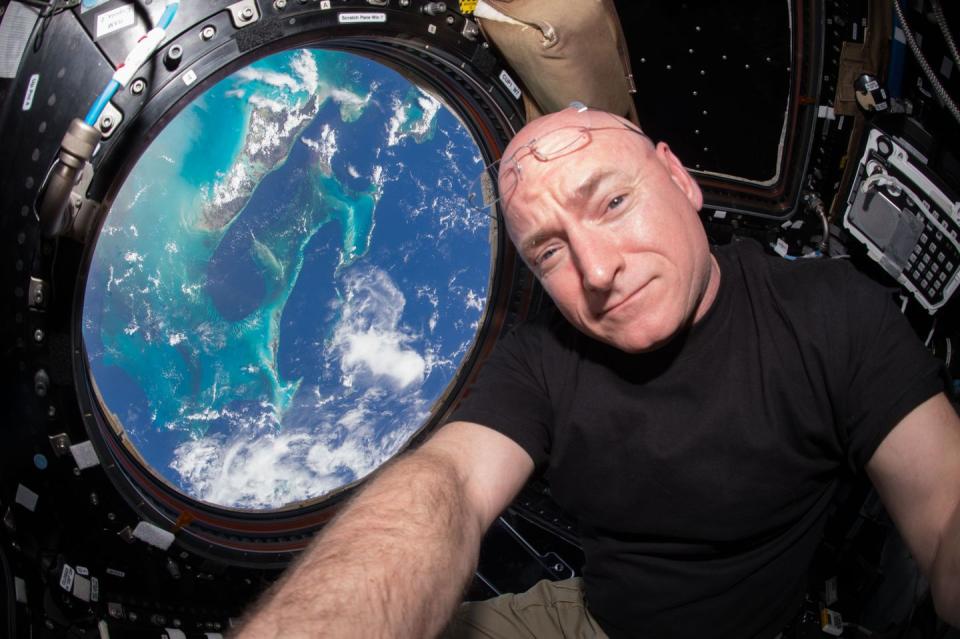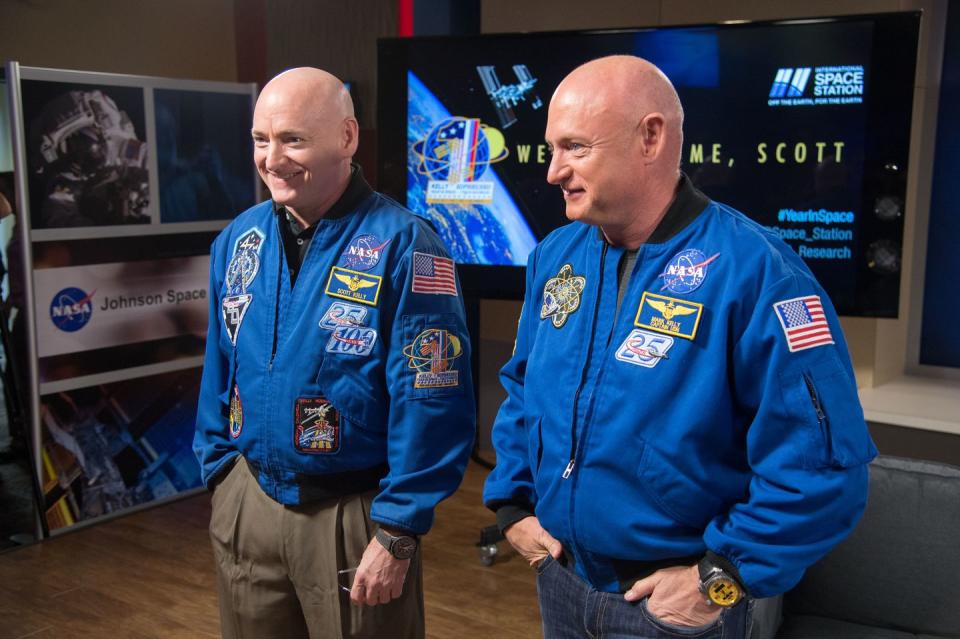This Is Your Brain (and Body) on Space

As we get closer to returning to the moon, setting foot on Mars, and eventually colonizing other planets, one of the biggest questions we still face is exploring what prolonged space exposure does to the human body.
Surprisingly, we know very little about the long-term effects of space radiation, but there's a good reason for that: We haven't really gone to deep space more than a small handful of times. In the 1960s and 1970s, several crewed NASA missions went to and from the moon, with the last Apollo mission ending in 1972. In the years since, we've stuck pretty close to home.
An Experiment Not Easily Replicated

It's difficult to mirror the long periods of space exposure that would be needed for, say, a months-long mission to Mars. A one-way ticket to Mars would take at least six months; the longest moon mission was only 12.5 days.
"We still have a small group of people who have flown in space significantly long enough that we might see some effects," Guillaume Weerts, Space Medicine and Management Support Team Leader at the European Space Agency, tells Popular Mechanics.
This isn't to say that there's no data from the Apollo missions. One study suggested that Apollo astronauts faced unique heart problems based on their exposure to deep space radiation.
But given the short exposure to deep space by contrast to exposure to near-Earth space, like an extended stay on the International Space Station (ISS), scientists have had to turn to other means to study what happens beyond Earth.
Why Deep Space Matters

NASA has flown more around 230 missions with human participants. This encompasses both NASA piloted missions and ISS trips using Russian Soyuz vehicles. Eleven of those missions were Apollo missions. As mentioned, only nine Apollo missions landed on the moon. Thus, 4 percent of space missions, give or take some decimal places, have actually gone to deep space, and the difference between near-Earth space and deep space are stark.
ISS astronauts don't have as much shielding from the effects of space radiation as we do because of Earth, but it is still well within our planet's magnetic field, batting away the most harmful radiation. This leaves near-Earth space as a comparatively low-risk environment.
But once you get past Earth's protective influence, space radiation reigns supreme and cosmic rays—stripped, charge particles remaining from supernova explosions—are everywhere. Some Apollo astronauts reported seeing flashes of light with their eyes closed, with cosmic rays as a possible culprit. There are also highly charged radiation like gamma rays and delta rays bouncing around space.
"What we can measure on board the ISS is not predictive to what we might see in deep space," Weerts says. "If we can go to the moon, if we can go to lunar orbit like the gateway might do, that will already give us a far better environment (to test out radiation)."
What We Do Know

While the ISS may be an imperfect testbed for radiation exposure, it's still plenty good for being able to learn about how the body responds to microgravity, an important factor when considering a long duration spaceflight.
While many astronauts spend a week or so in space, a few have gone much, much longer. Peggy Whitson wrapped up 289 days in space in 2017, while Scott Kelly spent a record-shattering 340 days. Kelly's "year in space" experiment was atypical because there was also a control group subject built into it.
Scott Kelly has a twin named Mark Kelly (who is a decorated astronaut) and had much of the same training as his brother. Prior to the experiment, they had both spent many weeks in space, though Scott had a longer total duration compared to Mark's 54 days. If Mark remained on Earth while Scott was in space, then they could see what effects space had on a human body vs. normal variation.
This famously became known as NASA's Twins Study, and after extensive examination, NASA reported that there were a few key differences between the Kellys after Scott's flight.

The first deviation was the length of telomeres on Scott's DNA grew shorter than expected and his gene expression also changed. This is believed to be in response to the radiation environment, and some of these genetic discrepancies went away after a few months back, but about 8 to 9 percent stayed changed after six months. This indicates that some DNA damage took place, and it may not all be reversible. There were also noticeable epigenetic changes, which is when environmental factors tweak the genome just a bit.
NASA also reported cognitive issues, with Scott displaying delays in overall performance speed and accuracy, though NASA thinks that may have been a readjustment period on return to Earth's gravity.
Physically, Scott lost about 7 percent of his body mass in space, though this may have been due to an exercise regimen and his set meals on the station. He experienced some problems with bone breakdown and reformation. Scott's overall stomach microbiome also changed over the duration of the mission, though this, too, could have been a dietary factor.
There was evidence of inflammation to and thickening of artery walls in Scott, an indicator of a stress response. There were also some effects noted in Scott's eyes. This is important because there's growing research about vision loss after spaceflight, which could have something to do with fluids in the body responding to microgravity. But this problem is so prevalent that two-thirds of astronauts have reported significant vision changes after spaceflight.
The Effects of Deep Space (In Mice)
With no humans journeying into deep space, those who want to study its effects have had to turn to different means: exposing lab animals to space-like radiation.
Charles Limoli, a University of California at Irvine vice chair in the Department of Radiation Oncology, and his team recently investigated the effects of neutron radiation in mice exposed to space-like conditions, and reported on the results in the journal eNeuro.
The most significant degradations were in stress responses, memory, and learning. There were cognitive changes seen to the mice that could have a noticeable effect on space flight.
"We don’t think these types of impairments would impact long term memory," Limoli tells Popular Mechanics. "They’re not going to forget who their friends and family are or forget how to fly the ship, but if they encounter an unexpected situation or have to do some on-the-spot problem solving, there could be an elevated risk for making mistakes."
The mice were exposed over the course of six months to a deep space-like amount of radiation, though it wasn't a 1:1 match for what might be seen, owing to the difficulty of perfectly simulating the various radiation exposures compared to the cost and energy expenditure. Comparatively, it would've taken a particle accelerator at Brookhaven National Laboratory running continuously for six months to do this, a prohibitive amount of time, money, and energy.
Overall, the amount of radiation isn't that much. Over six months—again, an Earth to Mars flight time—the mice received about 40 centigrays of radiation. But even with this limited amount of radiation, there were still cognitive effects that were by no means deadly, but effects that could become chronic.
"These impairments are very persistent, lasting out to a year, suggesting these changes are permanent," Limoli says.
While Limoli's study involved an all-male mouse cohort, Susanna Rosi, a professor in the Department of Physical Therapy & Rehabilitation Science and Neurological Surgery at the University of California at San Francisco, looked at sex-related differences in mice exposed to space-like radiation. She saw similar effects to Limoli's experiment in male mice, but the female mice seemed to fair better.
"Our research suggests that the difference is on the immune system," Rosi tells Popular Mechanics in an email. "The brain immune system of the female was not activated by the exposure to space radiation while the immune system of the male was highly activated, in line with the finding that in the male there were less synapses (the neuronal connections that allow the brain to function). When there is a maladaptive activation of the brain immune system the cells starts to 'eat' these contact and consequently affect brain function."
To Mars...and Beyond

The field of research is relatively new, and may—for a few years at least—stay in mice. But Limoli thinks that by the time we may be launching out into deep space, there could be some helpful supplements for astronauts that will protect against inflammatory responses and oxidizing agents, potentially counteracting some of these effects.
Down the line, he can see technological changes helping better protect against radiation. For instance, if we turned to building spacecraft in space, one component at a time like the ISS, we could have spacecraft with thicker hulls and thus better radiation protection. Peering even further into the future, fusion technology could enable faster missions and maybe even creating a mini magnetic field surrounding just the spacecraft.
While there remain a lot of unknowns, if we want to make it in space, we have to understand all the risks. While that might take some time and due caution, nothing biologically appears to prevent mankind from exploring the stars.
You Might Also Like

